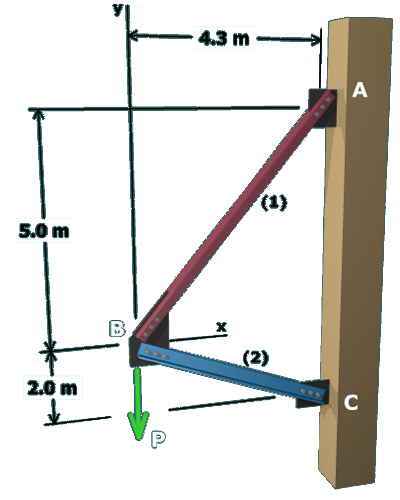Member (2) has been shown to be the factor that limits the load-carrying capacity of the structure. To compute the magnitude of load , set:
and once again solve the two equilibrium equations simultaneously, this time for unknown forces and .
Note: While the magnitude of equals its allowable force, the negative sign is attached because the previous calculation showed that member (2) acts in compression.
